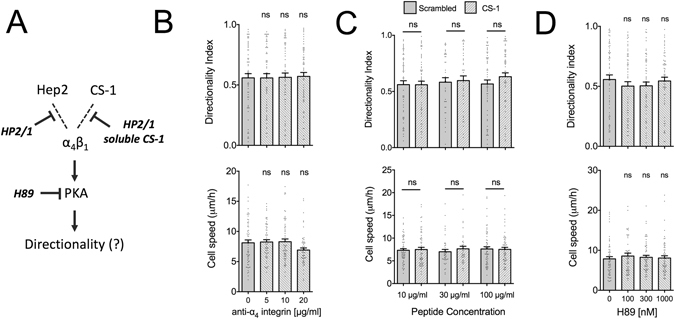Figure 2.

Integrin α4β1 blocking or PKA inhibition do not affect cell speed and directional persistence of fibroblast migration on FN. (A) Model of potential α4β1-mediated regulation of directional persistence in migration. Dashed lines indicate potential binding to integrin ligands and blocking reagents used are shown in bold. (B) REF speed and directionality index on FN-coated substrates (10 μg/ml) were not affected by the presence of blocking antibody against integrin α4β1 (clone H2P/1). Values in presence of antibody were compared to the control condition using one-way ANOVA analysis (Nexp = 3; n = 60). (C) REF speed and directionality index on FN-coated substrates (10 μg/ml) were not affected by the presence of CS-1 peptide, compared to a scrambled control. Values were compared using a Mann-Whitney test (Nexp = 3; n = 60 for peptide concentrations of 10 and 100 μg/ml and Nexp = 2; n = 40 for 30 μg/ml). (D) REF speed and directionality index on FN-coated substrates (10 μg/ml) were not affected by the presence of the soluble PKA inhibitor H89. Values in presence of H89 were compared to control conditions (same amount of DMSO as used for the highest H89 concentration) using one-way ANOVA analysis (Nexp = 3; n = 57–60). Mean ± s.e.m. are presented. ns: not significant.
